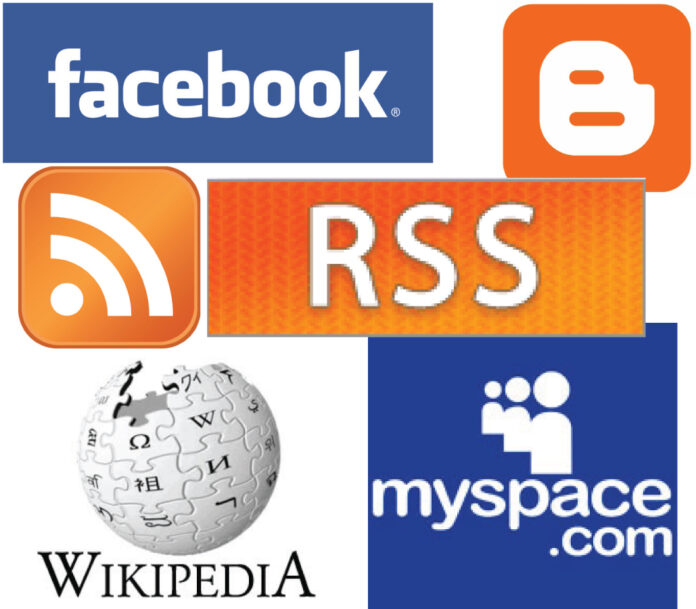
Remember when the term My Space meant your cubical at work; Facebook was a high school yearbook; Twittering was what the birds did in the spring; and Viral was something you only heard at the doctor’s office?
While many of us are still trying to sort out exactly what exactly is meant by a blog, wiki and RSS feed, businesses are desperately trying to figure out how to harness the impact of new open media sources and leverage their potential.
At the outset, these technology vehicles were primarily used for connecting with friends or community and were originally labeled “social media.” As their influence has broadened, so has the term. In fact, many would argue that open source media is more of a movement than a radical or specific change. It dramatically impacts every aspect of business and branding because it has drastically changed marketing by offering an almost endless sea of easily available comparative data. You may recall when Time Magazine chose the 2006 Person of the Year; on the cover was a reflective square with the title, “You — the Online Consumer”. Successful businesses are the ones who recognize this cultural shift and understand the need to collaborate with consumers and build relationships in a new way.
Just for the 20-something “Y Generation,” you say? Not so fast. According to the Pew Research Center, well over 80% of adults (ages 30 +) are online and are rapidly increasing their activity. Contrary to the image of the “Net Generation,” internet users in their 20s do not dominate every aspect of online life. It is — in fact — the 30 to 49-year-old crowd who is most likely to bank, shop, and look for health information online. Boomers are just as likely to exert their influence – 70% who regularly make purchases online. Facebook alone boasts over 250 million active users worldwide – 120 million of whom log onto their page every day. They also report the fastest growing demographic is people 35 years of age and older.
The current economic state has had a significant impact on the use of online tools as well. Pew Research found that 69% of all Americans have used the internet to cope with the recession as they hunt for bargains, jobs, ways to upgrade their skills, better investment strategies, housing options and government benefits. The internet and open media resources such as chat rooms, discussion boards and blogs are where consumers get information and seek advice during hard times, especially when it comes to their personal finances and economic circumstances.
The 2008 Presidential campaigns and election will go down in history as a powerful example of how new and open media impacts our lives. Research shows that 74% of internet users went on line to get news or information about the election. More than half (55%) of the voting-age population used these resources to get involved in the political process during the 2008 election year alone.
As we see from the multitude of candidate/campaign pages on Facebook and CNN’s use of Twitter, the influence of open media sources on news and politics continues to grow. The steady plummeting value of conventional media stock is not surprising when you consider that among the entire population (both on and off-line) the internet has become equal to newspapers and about twice as important as radio when seeking news and election information.
While political advisors love the ability to use open media to promote their candidate and spread their message – as with most things – there are challenges as well. The very nature of open media involves user driven and manipulated content. In other words – anyone can say just about anything they want. Studies show that voters are increasingly moving towards sites that match their own political viewpoints — which will likely only increase the ideological divide.
Clearly, the invent of the iPod and music downloads led the charge for sharing data online, but video sharing continues to grow at an astonishing rate. According to a study conducted in April 2009 — 62% of adult internet users watch videos on such sites as YouTube, up from just 33% in December 2006 (Pew). While much of the recent technology is aimed at getting internet users to migrate from computer screens to TV screens — more cell phone users are opting for the convenience of watching video on their handheld devices such as the iPhone and Blackberry. This practice has marketing and PR executives desperate to leverage the exposure and advertising executives scrambling to find ways to stay competitive. It is the business executives, politicians, and entrepreneurs who embrace the open media movement and understand how to integrate conventional and new media strategies that will be the successful on this new frontier. In any case, it will be a learning process.
Common terms defined:
Web 2.0 is a broad term used to refer to the new era of web-based applications built around user-generated (blogs) or user-manipulated content (wikis) and social networking sites.
A Blog is an online “journal” updated by individuals who wish to offer commentary or information.
Facebook is a free online network used to share information/photos/links/videos; connect with family/friends, and learn more about their local/global community.
Twitter is a free micro-blogging service where users can instantly share messages/links limited to 140 characters.
Wikipedia is a website “encyclopedia” where content is continuously added and updated by a multitude of sources and users.
By Stephanie Koehler [email protected]

